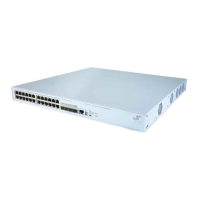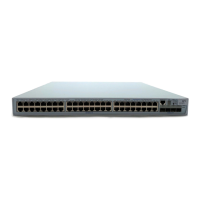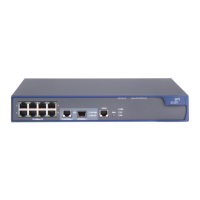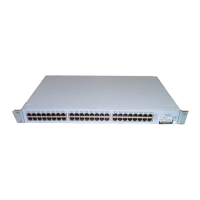96 CHAPTER 5: NETWORK PROTOCOL OPERATION
2 Configure the IP address pool for access management on port 1.
[4500]interface ethernet1/0/1
[4500-Ethernet1/0/1]am ip-pool 202.10.20.1 20
3 Add port 1 into isolation group.
[4500-Ethernet1/0/1]port isolate
4 Configure the IP address pool for access management on port 2
[4500-Ethernet1/0/1]interface ethernt1/0/2
[4500-Ethernet1/0/2]am ip-pool 202.10.20.21 30
5 Add port 2 into isolation group.
[4500-Ethernet1/0/2]port isolate
Access Management via
the Web
The Security/Authorized IP menu option on the Web interface allows the user to
specify a range of IP addresses that will permit Web, Telnet and SSH access.
Network Requirements
Enter an IP address and a ‘wildcard’ value. For example, an authorized IP address
of 10.10.10.1 with a wildcard of 0.0.0.255 will authorize all addresses from
10.10.10.0 to 10.10.10.254.
Configuration Procedure
To configure this feature using the CLI, the following commands should be
entered from System View:
<4500>system-view
[4500]acl number 2500
[4500-acl-basic-2500]rule 0 permit source 10.10.10.1 0.0.0.255
To delete this feature, enter:
<4500>system-view
[4500]acl number 2500
[4500-acl-basic-2500]undo rule 0
UDP Helper
Configuration
Overview of UDP Helper The major function of the UDP Helper is to relay-forward UDP broadcast packets,
that is, it can convert UDP broadcast packets into unicast packets and send them
to the designated server, as a relay.
When UDP Helper starts, the Switch can judge whether to forward the UDP
broadcast packets received at the port based on UDP port ID. If yes, the Switch
then modifies the IP address in the IP packet header and sends the packet to the
designated destination server. Otherwise, it sends the packet to the upper layer
module for further processing. For the BOOTP/DHCP broadcast packet, if the client
specifies in the request message that the response message needs to be received
as broadcast packet, then the Switch broadcasts the response message to the
client. Otherwise, it unicasts the response message.

